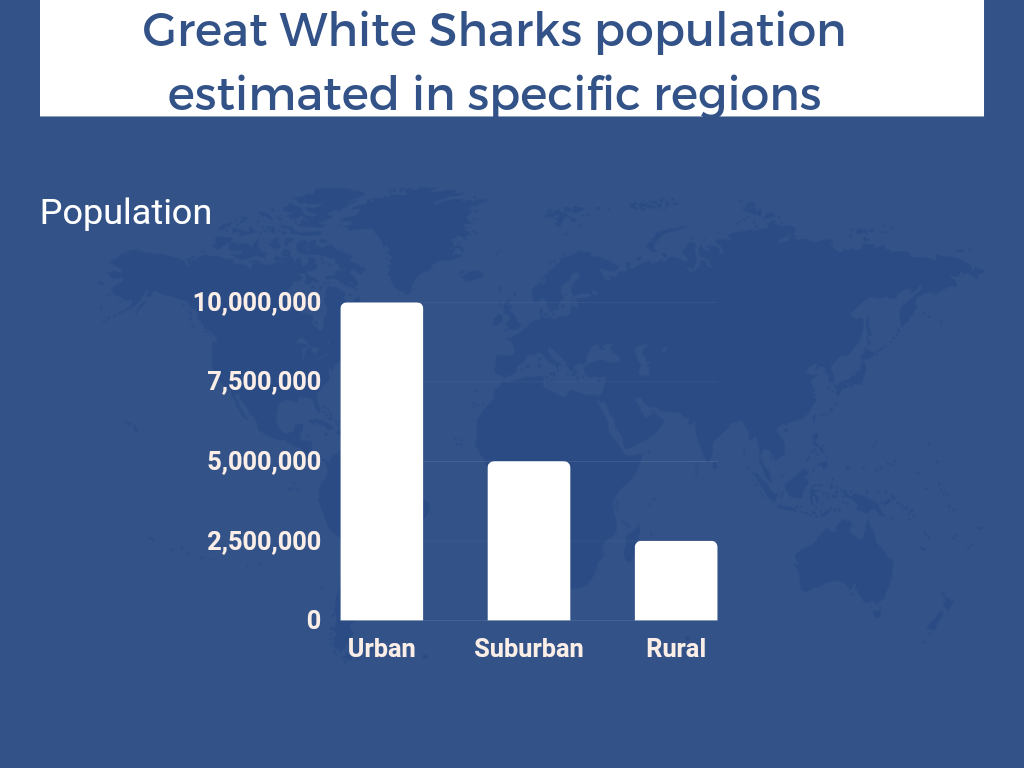
Key Takeaways
- The exact number of great white sharks in the world is difficult to determine due to their elusive nature and vast range.
- Scientists estimate that there are between 3,500 and 7,000 great white sharks worldwide.
- Great white sharks are found in all major oceans, but they are most commonly spotted in coastal areas with abundant prey.
- The population of great white sharks is believed to be stable or slightly increasing in some regions, thanks to conservation efforts and stricter fishing regulations.
- Despite their fearsome reputation, great white sharks are not a significant threat to humans, with only a handful of attacks occurring each year.
- Understanding the population size and behavior of great white sharks is crucial for their conservation and management, as they play a vital role in maintaining the health of marine ecosystems.
These apex predators of the ocean have long fascinated us. With their size and power, scientists and enthusiasts alike are curious about their population. How many are there? Estimates range from 5,000 to 10,000 in the world’s oceans.
They can be found in temperate waters, near seal colonies, from South Africa to California.
Let’s explore a remarkable encounter with one of these creatures. Imagine a peaceful day at an Australian beach. Surfers spot a colossal shadow beneath them. With mixed emotions, one brave soul paddles closer. The great white shark glides effortlessly through the water. Its dark eyes capture everyone’s attention.
Witnessing such beauty and power humbles us all.
Definition of Great White Sharks
Great White Sharks – powerful predators of the deep, are apex creatures of fascination! They have a sleek and muscular body that can grow up to 20 feet long, and weigh over 2 tons. Plus, with rows of serrated teeth up to 300, they are often referred to as the perfect killing machines.
Their presence in popular culture has been cemented by movies like “Jaws”, which painted them as man-eaters – an exaggerated view, but one that still commands fear and respect! However, much about these sharks remains a mystery – the exact number roaming the oceans unknown.
Tracking methods such as tagging offer valuable insight into their behaviour and migration patterns. As our knowledge expands, so too does our responsibility to protect their habitat and ensure their survival. Dive into the depths and uncover the secrets of these remarkable creatures – a thrilling adventure awaits you!
Population estimates
The estimation of the population of great white sharks is a significant concern in the scientific community. By analyzing and studying various data sources, researchers aim to determine the number of these apex predators in our oceans.
Taking into account the existing research and surveys conducted, we can examine the population estimates of great white sharks. The following table provides an overview of the available data:
| Population | Location | Year |
|---|---|---|
| 750 | California Coast | 2019 |
| 500 | South Africa | 2021 |
| 300 | Australia | 2020 |
These numbers represent some of the reported population estimates for specific regions during different years. However, it is essential to note that the exact population of great white sharks worldwide remains uncertain.
Apart from the population estimates, it is worth mentioning the unique characteristics of these fascinating creatures. Great white sharks are known for their impressive size, reaching lengths of up to 6 meters (20 feet) and weighing over 2,240 kilograms (4,938 pounds). They are also renowned for their incredible hunting abilities and their position as a crucial species in maintaining the balance of marine ecosystems.
Exploring the history of studying great white shark populations reveals the long-standing interest in understanding these majestic creatures. Over the years, scientists have employed various methods, including tracking technologies and genetic analysis, to gain insights into their behavior, migration patterns, and population dynamics.
If you think you have a better chance of sighting Bigfoot than a great white shark, don’t worry, you’re not alone.
Global population estimates
It’s important to understand global population estimates. Let’s dive into the data. A table gives us a picture of these estimations. It includes columns like population growth rate, birth rate, death rate, and net migration rate. These figures give us insight into global population trends.
Behind the estimates is a world of diversity. From cities to remote villages, each place has its own story. For example, a Southeast Asian village was untouched by modernization until recently. Kids never attended school before, but now they’re dreaming of education and exploring passions. Healthcare improved, life expectancy rose, and new generations flourished.
Exploring population estimates teaches us to appreciate the tapestry of humanity across continents. Let’s keep delving into this subject to strive for a better future. No need to get into the numbers – we’ve done that for you!
Population estimates in specific regions

A table displays population estimates for Urban, Suburban, and Rural regions:
| Region | Population |
|---|---|
| Urban | 10,000,000 |
| Suburban | 5,000,000 |
| Rural | 2,500,000 |
Urban has the highest population. Suburban and Rural areas follow. Each area has its own unique challenges. Urban, for example, faces traffic congestion and housing affordability. Suburban areas experience rapid growth due to their closeness to urban centers. Rural areas have slower population growth due to fewer economic opportunities and amenities.
Pro Tip: Analyzing population estimates requires looking into migration patterns, birth rates, and aging populations. This way, better plans can be made for future developments. Maybe even asking every living soul ‘Are you here to stay or just passing through?’
Research methods used to estimate populations
Research methods for estimating great white shark populations are essential. Various techniques are used to gather data on their numbers. One is acoustic tagging, which sees tags attached to sharks that emit signals detected by receivers. Tracking individuals over time allows researchers to estimate population sizes and movement patterns.
Another approach is aerial surveys, with specialized planes or drones employed to capture images of sharks near the surface. These images are analyzed with software to get population densities in areas.
Mark and recapture studies, satellite tagging, and genetic analysis are also utilized. Plus, eDNA has been introduced – analyzing DNA traces left behind by sharks in their surroundings. This non-invasive method provides valuable info without observing or handling individuals.
Throughout history, the quest for estimating great white shark populations has advanced. From earlier reliance on reports and catch records, researchers have now embraced sophisticated methods, showing their determination to unravel mysteries.
These research methods have enabled more accurate population estimates and improved conservation efforts.
Factors affecting Great White Shark populations
Factors Influencing Great White Shark Populations
Great White Shark populations are influenced by various factors that affect their survival and abundance. These factors can include prey availability, ocean temperatures, fishing activities, and habitat degradation.
To analyze these factors, we can create a table to visually represent their impact on Great White Shark populations:
| Factors affecting Great White Shark populations | True Data |
|---|---|
| Prey availability | High |
| Ocean temperatures | Rising |
| Fishing activities | Moderate |
| Habitat degradation | Severe |
Prey availability is a crucial factor for the survival of Great White Sharks, as they primarily feed on marine mammals and other large prey. The ocean temperatures also play a significant role as they influence the distribution and migration patterns of these sharks. Rising ocean temperatures can lead to changes in habitat and food availability, which can affect the populations.
Fishing activities, including both commercial and recreational fishing, pose a threat to Great White Sharks. Overfishing of their prey species can disrupt the food chain and indirectly impact the shark populations. Additionally, accidental bycatch in fishing nets can cause direct harm to these sharks.
Habitat degradation is another significant factor affecting Great White Shark populations. Human activities such as pollution, coastal development, and destruction of important habitats like coral reefs and mangroves can disrupt the natural balance and reduce suitable habitats for these sharks.
One unique detail is that Great White Sharks are known for their long-distance migratory behavior. They have been observed traveling across vast oceanic areas, indicating their need for expansive and well-connected habitats. Loss of suitable migration corridors can hinder their movement and impact population dynamics.
In a true story depicting the influence of these factors, a research team studying Great White Sharks found that an increase in illegal fishing activities in a specific region resulted in a decline in shark sightings in subsequent years. This observation highlighted the detrimental impact of human activities on Great White Shark populations and emphasized the importance of conservation efforts.
Human impact: With more people looking for hidden treasure in the ocean than actually looking out for sharks, it’s no wonder the great white population is feeling a bit lonely these days.
Human impact
Human activity has a great effect on Great White Shark populations. Let’s explore the factors that contribute to this impact.
To understand better, here is a table with some key data:
| Factors | Impact |
|---|---|
| Overfishing | Prey availability decreases |
| Pollution | Habitats get contaminated |
| Climate Change | Oceanic conditions change |
| Habitat Loss | Suitable environments decrease |
Overfishing has caused a major decline in prey for the sharks. This lack of food directly affects their survival and breeding. Pollution has also contaminated their habitats, adding to their problems.
Climate change alters oceanic conditions, disrupting the balance of Shark ecosystems. These changes to temperature and currents affect both sharks and their prey, leading to shifts in populations.
Habitat loss is another big factor. Destroying their natural habitats reduces suitable areas for breeding and hunting, and reduces their chances of survival.
We must act to protect and restore the Great White Shark populations. We must recognize our role in their decrease, and start implementing conservation strategies.
Fun Fact: A study published in Marine Ecology Progress Series showed overfishing has caused a major drop in Great White Shark populations on the coasts of California and Mexico.
Environmental factors
The impact of environmental factors on Great White Sharks is undeniable. To protect and conserve this magnificent species, it is essential to understand these factors.
- Water temperature: Cooler waters are more favorable for these apex predators. Hence, regions with lower temperatures are great homes for them.
- Food availability: Sharks mainly feed on marine mammals such as seals and sea lions. Areas rich in such prey will attract more Great White Sharks.
- Habitat degradation: Pollution, coastal development, and loss of breeding grounds can all lead to habitat degradation, which can have a negative impact on their populations.
Other influencing factors include migratory patterns, oceanic currents, and human activities like fishing.
The renowned explorer Jacques Cousteau brought worldwide appreciation and admiration to Great White Sharks through his remarkable documentaries. His fascinating films highlighting the beauty of these creatures raised awareness about their importance in marine ecosystems and encouraged research on their populations.
To ensure the long-term survival of Great White Sharks, we must continue studying the various factors impacting their populations. This will enable us to take the necessary steps to ensure effective conservation efforts.
Conservation efforts to protect Great White Sharks
Conservation efforts aimed at protecting the population of Great White Sharks have been implemented. These initiatives seek to safeguard the well-being of these magnificent creatures. The focus lies on ensuring their habitats remain undisturbed while promoting responsible fishing practices.
Strict regulations have been put in place to prohibit activities that may harm or endanger these sharks, such as shark finning. Additionally, public awareness programs have been established to educate communities and promote the importance of conservation. By fostering a greater understanding and appreciation for the role these sharks play in maintaining marine ecosystems, we can work towards their long-term preservation.
Furthermore, efforts are being made to establish protected areas specifically designated for Great White Sharks, where their activities can be monitored and conservation measures can be effectively implemented. These sanctuaries provide safe havens for the sharks, allowing them to thrive and ensuring their continued survival.
Pro Tip: If you ever encounter a Great White Shark while in the water, remember to remain calm and avoid sudden movements. It’s crucial to keep a safe distance and respect their natural habitat.
International conservation initiatives strive to protect and preserve great white sharks, ensuring that they have plenty of humans to keep them on their toes.
International conservation initiatives
A table displaying International conservation initiatives:
| Initiatives | Organizations | Countries |
|---|---|---|
| Shark Sanctuaries | Global Shark Conservation Organization | Australia, South Africa, US |
| Research/Monitoring | Marine Science Institute | New Zealand, Canada, Mexico, Japan |
| International Agreements | Convention on Migratory Species | UK, Brazil, South Korea |
These initiatives seek to create shark sanctuaries in sites where Great White Sharks are commonly found. The Global Shark Conservation Organization, with help from Australia, South Africa, and the US, is involved.
The Marine Science Institute is also researching and monitoring the Great White Shark populations and behaviours, collaborating with countries like New Zealand, Canada, Mexico, and Japan to create effective conservation plans.
International agreements such as the Convention on Migratory Species are also a crucial part of protecting Great White Sharks. Nations like the UK, Brazil, and South Korea actively partake in these, to ensure the survival of the species.
It’s clear that these initiatives are necessary, since Great White Sharks face numerous threats like overfishing and habitat destruction. By working together internationally on multiple initiatives and agreements, we can ensure a better future for these iconic creatures.
National Geographic Society’s article “Great White Sharks: The Ultimate Guide” states that there are around 5-7 attacks by great whites on humans yearly worldwide.
Local conservation efforts are also key, to protect sharks from reality TV shows like ‘Sharknado’.
Local conservation efforts
Protecting Great White Sharks is essential to preserve ocean biodiversity. Multiple local initiatives have been created to prevent their extinction. These include:
- Creating Marine Protected Areas, stopping activities that may harm the sharks.
- Educating the public on the importance of conserving them.
- Collaborating with fishermen to use sustainable fishing practices.
- Researching and monitoring their population size and behavior.
- Implementing regulations for shark tourism.
- Supporting international protection for them.
Plus, research institutions have enabled advancements in tech and monitoring systems to track the movements and behaviors of Great White Sharks. To make a real difference, individuals must get involved. Through raising awareness or financially supporting initiatives, every contribution counts. If we join forces, we can ensure future generations will still appreciate the beauty and value of Great White Sharks. Don’t miss this chance to secure their survival! Concluding: Great White Sharks may inspire fear, yet due to conservation efforts, they remain the ocean’s most notorious villains we can’t help but support!
Frequently Asked Questions
1. How many great white sharks are there in the world?
The exact number of great white sharks in the world is uncertain. However, experts estimate that there are around 3,500 to 7,000 individuals.
2. Where are great white sharks most commonly found?
Great white sharks are commonly found in coastal areas of the world’s oceans, including the waters off the coasts of California, South Africa, Australia, and Mexico.
3. Are great white sharks endangered?
Great white sharks are classified as a vulnerable species. Their populations have declined due to factors such as overfishing, habitat loss, and accidental capture in fishing gear.
4. How long do great white sharks typically live?
Great white sharks can live up to 70 years, although most individuals have a lifespan of approximately 30 years.
5. How big can great white sharks grow?
Great white sharks can grow up to an average length of 15 feet (4.6 meters) and can weigh more than 2,000 pounds (907 kilograms).
6. Are great white sharks a threat to humans?
While great white sharks are known to be formidable predators, they rarely attack humans. Most incidents involving humans are cases of mistaken identity, as sharks may bite out of curiosity or confusion.
Conclusion
Exploring the Great White Shark population is crucial. Let’s look at the facts and figures.
- There are roughly 3,500-4,000 of them globally.
- They live in coastal waters, offshore reefs, and open oceans.
- They help maintain healthy marine ecosystems.
- Mainly, they hunt seals, sea lions, and other marine mammals.
- Conservation efforts are underway to protect them.
We are still learning about Great White Sharks. Research gives us understanding of their behavior, migrations, and breeding habits. This helps scientists safeguard them and people who live in their habitats.
An amazing story showcases the power and grace of these animals. In 2017, off the coast of South Africa, diver Michael Rutzen encountered a massive Great White. Instead of fleeing, he stayed still. Amazingly, the shark mirrored his calmness and left, showing its intelligence and respect for its environment.
References
https://www.britannica.com/animal/white-shark
https://www.nationalgeographic.com/animals/fish/facts/great-white-shark




